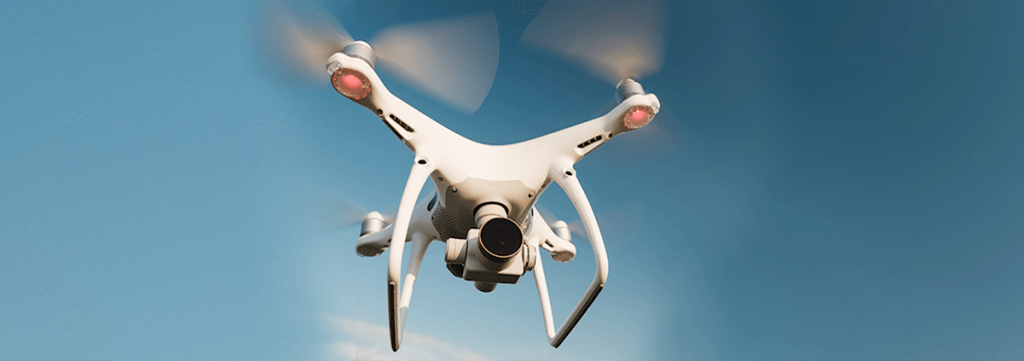In less than a decade, drones have gone from being military hardware to children’s toys. The number of radio-controlled drones sold in the world for commercial and hobby uses is growing at unprecedented rates. By the end of 2020, Goldman Sachs expects 7.8 million retail/consumer drone shipments and $3.3 billion in revenue, versus only 450,000 shipments and $700 million in revenue in 2014.
The Surge of Cheaper Drones in the Market
Drones in the retail segment are selling more towards the lower end of the price spectrum, causing a hike in market growth. But one of the main bottlenecks of these lower-cost drones is their limited range. The limitation of the range is attributable in part to battery power which usually lasts for only a few minutes of flight, but more because of the inherent technology used for controlling the drones.. It is here that CPaaS integration can help meet the growing demands of customers for longer range and even BVR (Beyond Visual Range) drones.
Understanding the Drone functionality
Remotely controlling a drone requires the ability of wireless communication which can be based on multiple protocols. A majority of drones today are controlled using Radio waves. For radio waves to work, you must have a transmitter to send messages and a receiver to get messages. The transmitter and receiver devices use a unique identification code to identify a transmission on one particular radio frequency. To do this, transmitters and receivers are paired using an RFID or a “Radio Frequency Identification” Code. All information broadcast over radio waves is prefixed with an RFID so that the receiver knows that the information it is picking up is meant for it. Most remote-control drones use 900 MHz for transmission which has a practical use range of about 100-300 meters depending on the field of vision. However, in urban settings, this range is rarely achievable, with 50-70 meters being the outer limit of maintaining control. The moment a drone goes beyond this range, or out of sight of the operator, it is as good as lost.
Many drones these days are Wi-Fi enabled, so they can broadcast video to a computer, tablet, or smartphone instead of RFID transmission. Some drones also use Wi-Fi for remote control using a tablet or mobile application. Wi-Fi works on an ultra-high radio frequency which means that its range is limited to about 100 meters in open spaces, and effectively to about 50 meters in normal, urban settings.
Both these mechanisms require line of sight and close distance flying. To manage long distance remote flight, the two imperatives are longer distance of signal transmission for control, and some mechanism to see “what the drone sees” so that it can be oriented for the user. Here, CPaaS can be considered as an option.
Upgrading Drone Mechanism with CPaaS
Utilising sim cards and mobile networks, which are available everywhere across the globe, even the lowest end drones can be converted into longer distance, BVR aircraft. CPaaS video streaming can be used to live stream the drone’s video feed onto any computer device. The data connectivity for controls can allow an operator to fly the drone for as long as the battery lasts, without worrying about losing control. Easy availability of GPS and CPaaS based transmission of that data can enhance the control element manifold and even allow independent flight on pre-programmed parameters.
Currently, camera drones operate on a low powered wi-fi network that a phone or control device can connect with. This severely reduces the range of the flight to the range of the wi-fi signal and has multiple challenges in urban flying. Converting this to internet-based, CPaaS powered flight can change the entire dynamics of drone flights.
Extending this functionality to commercial drones can also vastly increase use cases at the lower end of the cost spectrum. Having a drone capable of flying for a couple of hours, or for up to 100km, and transmitting high-quality video/audio is very costly with current technologies in play. Use cases like crop monitoring, traffic monitoring and other long-distance flight are reserved for speciality drone companies and come with certain licencing and restrictions. Moving the control and transmission from radio waves to internet-enabled communication can be a game-changer.
Using sim card and mobile network enabled flight for drones has already been done. In Spain, Vodafone has demonstrated that by utilising the mobile network, it is possible for network-connected drones to automatically perform remedial action manoeuvres dictated by dynamically created no-fly-zones (NFZ). The developed capability required absolutely no network customisation or optimisation. This use case was part of an experiment to embed this functionality in all drones to avoid them straying into restricted no-fly zones.
Utilising CPaaS platforms like EnableX can significantly reduce the complexity and cost of audio/video transmission for such drones. And with the capture enablement of video stream from the drone, the ultimate use cases for the video feed can range from identification, assessment, law enforcement, disaster management, security, surveillance and many more.


